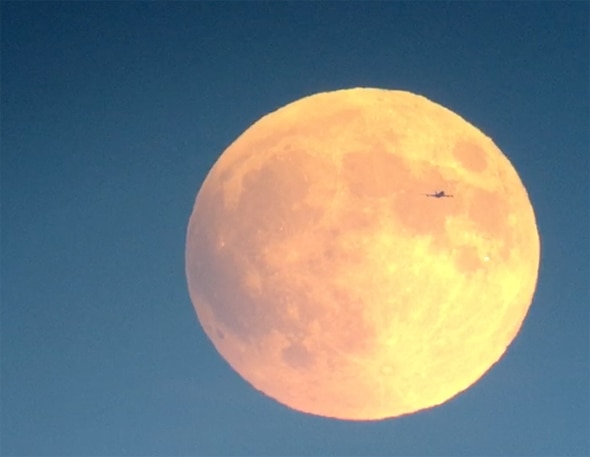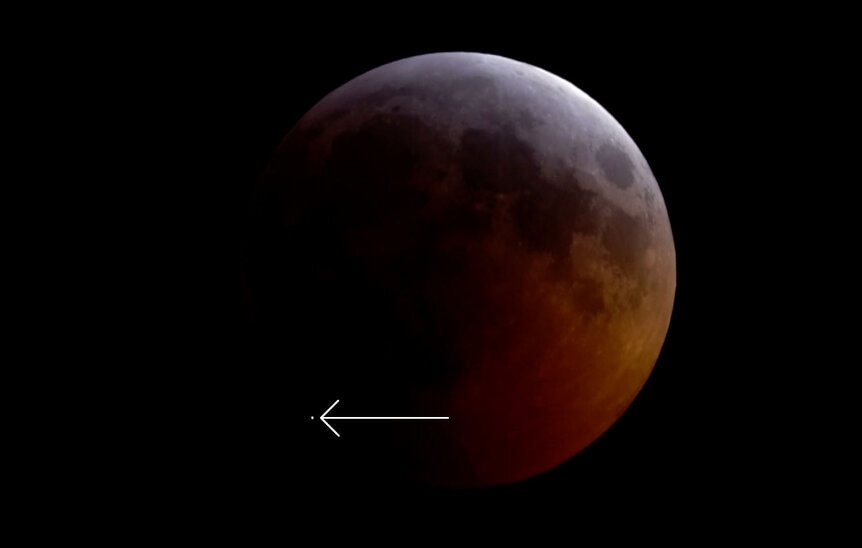Create a free profile to get unlimited access to exclusive videos, sweepstakes, and more!
How to watch the total lunar eclipse Sunday night/Monday morning May 15/16!
Everything you need to know to see the eclipse.

Cool news: Sunday night, May 15, into Monday morning, May 16, there’s a full lunar eclipse!
This happens when the Moon’s orbital motion around the Earth brings it into Earth’s shadow. If you were standing on the Moon you’d see the Earth slowly move in front of the Sun, eventually blocking it completely (so to lunar inhabitants it would be a solar eclipse).
This eclipse favors people in western Africa and Europe, who will see it late at night, and North and South America, who can see the entire event all night long depending on specific location. See the NASA video below for visibility at your location.
There are a couple of interesting things about this particular eclipse. One is that the Moon passes very close to the center of Earth’s shadow on the sky, so totality lasts a long time, about 85 minutes, and the Moon should get dark. Also it occurs when the Moon happens to be somewhat closer to the Earth in its elliptical orbit, so it’ll appear a few percent bigger than usual. Some people call this a supermoon — the technical term is proxigean or more accurately perigean, from perigee, the closest approach to Earth — but honestly the Moon’s only a little bit bigger than usual and you likely won’t notice.
I did a whole episode of Crash Course Astronomy on eclipses, so give that a watch to get up to speed on the basics.
There are two parts to the eclipse: The penumbral and umbral phases. Umbra means shadow, and the prefix pen- means almost. The umbral phase is what we think of as the eclipse itself, when the Moon is in the deepest part of the Earth’s shadow. But the penumbra comes first, as the Earth partially blocks the Sun as seen from the Moon. This part of Earth’s shadow isn’t as dark, and at first you probably won’t even notice it. It’s not until the Moon gets deep into the penumbra that it starts to become obvious.
Then on one side of the Moon the Earth completely blocks the Sun, and that part of the Moon grows truly dark. As the Moon moves around the Earth and deeper into the umbra it looks like a bite is taken out of the Moon; a growing disk of darkness that moves across it. When the Moon is completely engulfed in shadow we say the eclipse is total. Eventually the Moon begins to move out of Earth’s shadow and the process reverses itself.
The Time and Date website has a nice animation showing the Moon moving through Earth’s shadow with the timings for this eclipse, and a table of when each part of the eclipse occurs. I’ve also spent many a blog post writing about eclipses past, including the one in 2019 when a beach ball-sized asteroid impacted the Moon during the eclipse! You never know what you’ll see during one.
You don’t need any equipment at all to observe a lunar eclipse; it’s not like a solar eclipse where you need special gear to block sunlight and avoid boiling your eyeballs (generally not recommended). If you’re able, you just need to look up. You don’t even need to go outside if you have windows facing the right direction! But it does help to be outside; it’s neat to see the stars coming out as the Moon dims and loses the glare that washes the stars away with a typical full Moon.
A pair of binoculars can help, as does a telescope, because it’s fun to see the Moon close up, but they’re not necessary.
So, timing: The penumbral phase starts at 01:32 UTC on May 16 (so 9:32 p.m. Sunday night May 15 Eastern U.S. time). Again you probably won’t even notice that, but that phase lasts a little under an hour. At 02:27 UTC (10:27 p.m. ET) the umbral phase begins — usually called the start of the partial phase — and you’ll see the Moon’s edge darken. It takes just over an hour for the Moon to fully slip into Earth’s shadow, with totality beginning at 03:29 UTC (11:29 p.m. ET).
I suggest taking at least a peak roughly half an hour before the umbral phase starts, because by then you may see it start to darken. It’s pretty cool.
Totality lasts a long time, about 85 minutes. During that time the Moon may be hard to find in the sky! It can be so dark it’s not obvious like it usually is when full. The Moon may also look deep brown or red — from the Moon’s point of view the Sun is blocked by the Earth, but the Earth’s atmosphere will be lit up, and appear red for the same reasons sunsets appear red. That in turn makes the Moon look red. Some people call this the Blood Moon. Dramatic, and poetic enough.
Totality ends at 04:54 UTC (00:54 ET). Be sure to be out a few minutes early to see it start to brighten again! The last bit of the umbral shadow leaves the Moon at 05:55 UTC (01:55 ET) and for most people that’s when the eclipse effectively ends. Technically it leaves the penumbral shadow at 06:50 UTC (02:50 ET) and that’s the official end of the eclipse.
Who can see it? Here’s a video care of NASA that shows a map of Earth with visibility and timing (click through for more info):
EarthSky has a nice map, but specifically: People in western Africa and Europe will see the eclipse starting after midnight, and it sets still eclipsed. All of South American and the eastern regions of North America get the whole show, and the farther west you are the more of the beginning you miss (the Moon rises already partially eclipsed).
The next lunar eclipse will be in November 2022, and again favors North and South America.
Lunar eclipses are slow, stately, and very cool. The whole thing takes about 5 hours — from the beginning of partial through totality to the end of partial is about three and a half hours. You can go out every 15 minutes or so to check on progress and see how it’s changing. That’s what I do.
I’ve lost track of how many lunar eclipses I’ve seen. They’re all different and they’re all fun. It’s good for the whole family too. Parents can enjoy it, and the kids get to have a special night where they can stay up late. So go out and watch the Earth’s shadow eat the Moon, and enjoy yourself!



























